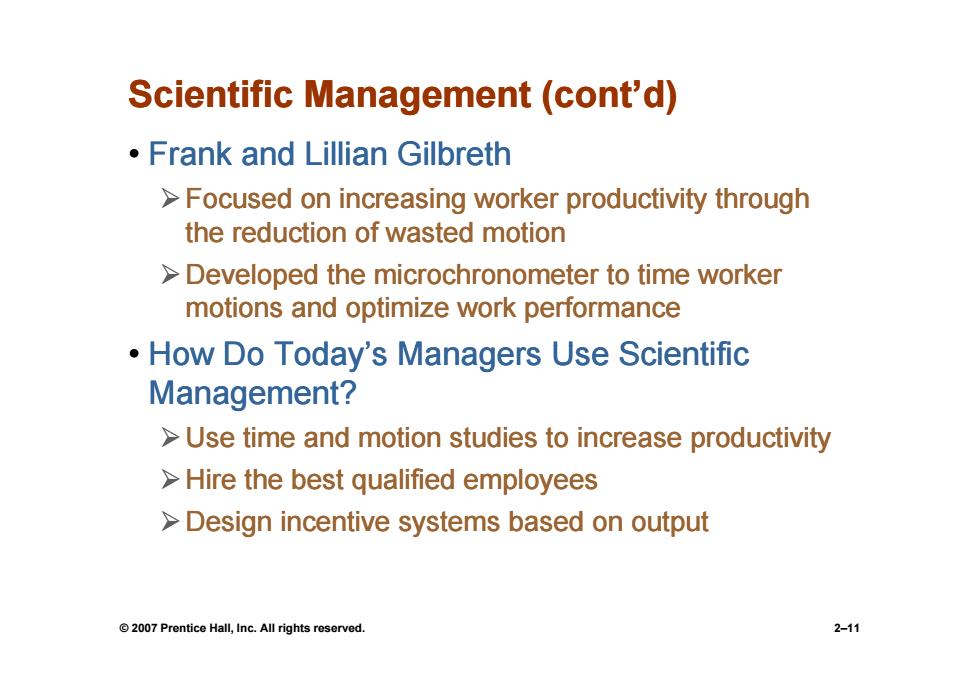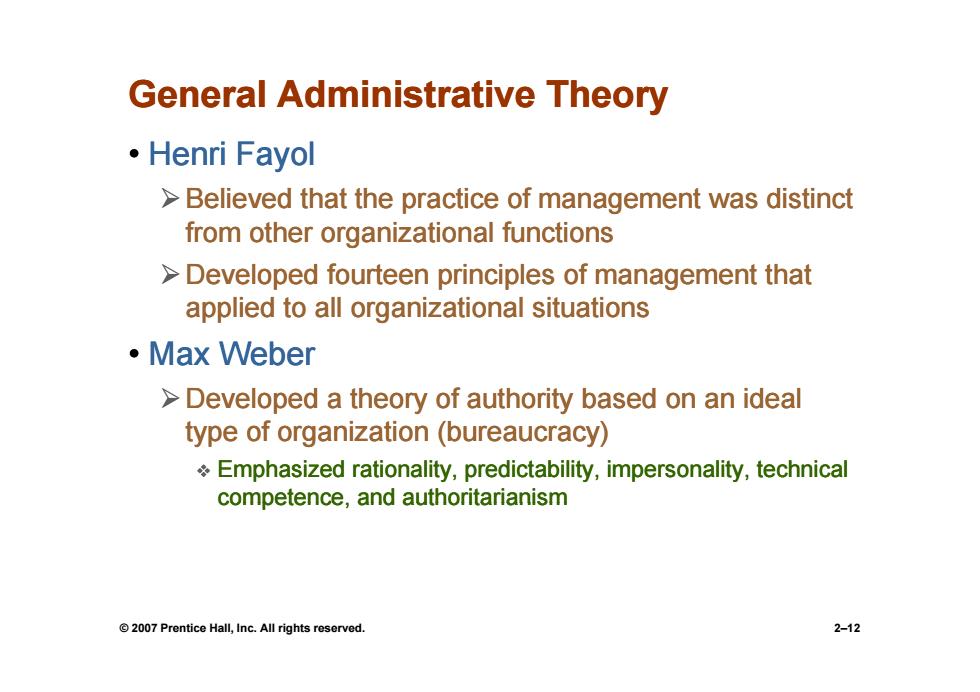
Scientific Management(cont'd) Frank and Lillian Gilbreth >Focused on increasing worker productivity through the reduction of wasted motion Developed the microchronometer to time worker motions and optimize work performance How Do Today's Managers Use Scientific Management? >Use time and motion studies to increase productivity >Hire the best qualified employees >Design incentive systems based on output 2007 Prentice Hall,Inc.All rights reserved. 2-11
Scientific Mana Scientific Manag () ement (cont’d) • Frank and Lillian Gilbreth ¾F d i i k d ti it th h Focused on increasing worker productivity through the reduction of wasted motion ¾D l d th i h t t ti k Developed the microchronometer to time worker motions and optimize work performance • H D T d ’ M U S i tifi How Do Today’s Managers anagers Use Scientific Management? ¾Use time and motion studies to increase productivity ¾Hire the best qualified employees ¾Design incentive systems based on output © 2007 Prentice Hall, Inc. All rights reserved. 2–11

General Administrative Theory ·Henri Fayol >Believed that the practice of management was distinct from other organizational functions Developed fourteen principles of management that applied to all organizational situations ·Max Weber >Developed a theory of authority based on an ideal type of organization(bureaucracy) Emphasized rationality,predictability,impersonality,technical competence,and authoritarianism 2007 Prentice Hall,Inc.All rights reserved. 2-12
General Administrative Theory • Henri Fayol ¾B li d th t th ti f t di ti t B elieve d th a t the practice o f managemen managemen t was di stinc t from other organizational functions ¾D l d f t i i l f t th t Develope d four teen principles o f managemen managemen t th a t applied to all organizational situations • M Wb ax W e b e r ¾Developed a theory of authority based on an ideal t f i ti (b ) type o f organization (bureaucracy ureaucracy ) Emphasized rationality, predictability, impersonality, technical competence and authoritarianism competence, and authoritarianism © 2007 Prentice Hall, Inc. All rights reserved. 2–12